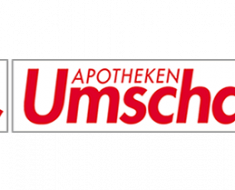Geraniums are cultivated in the garden, often as an ornamental groundcover. However, the plants can also be found in the medicine use, can be found here, usually under their official name of “geranium” or “cranesbill”. The healing effect of the stork beaks is mainly used for the treatment of gastro-intestinal, skin and infectious diseases of importance. Similarly, stork used its beak in the folk medicine for the treatment of wounds, and hemostasis. In this post we would like to inform you about the types of the stork’s beak can be used for medicinal purposes and how, exactly, the medicinal plant has.
Table of contents
Plug-in a letter to the stork’s beak
Scientific Name: Geranium
Plant Family: Geranium Family (Geraniaceae)
Popular Name: Geranium, Bozi Dar, The Blood Roses, Hühnerwurz, Ruprecht Herb
Origin: worldwide native to
Areas of application:
- Diseases of the digestive tract,
- Skin diseases,
- inflammatory infections
- and wounds and bleeding.
Main Ingredients:
- Tannins,
- Flavonoids
- and carboxylic acids
Plant Parts Used: Leaves
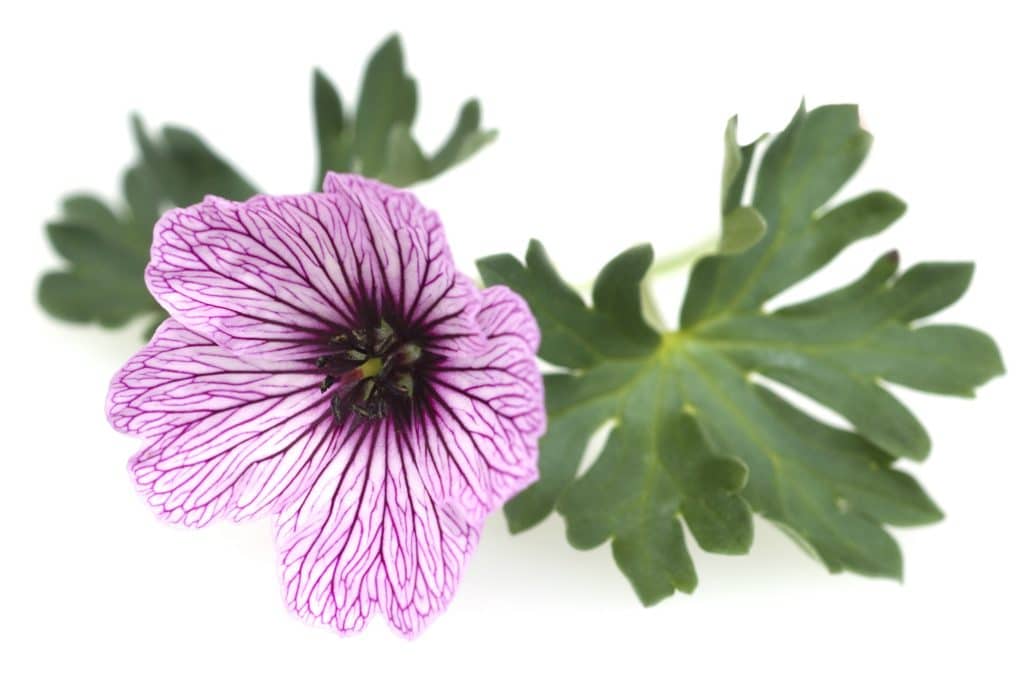
Herbs Portrait: Caution, Risk Of Confusion
The cranesbill (Geranium) provides the name-giving genus of the family of plants of the geranium family (Geraniaceae). His Name goes back to the Fruit of the Geranium species, which has a beak-like shape. Up to the 18th century. Century also counted beaks species of the genus Pelargonium, the Stork. To be able to the two geranium plants is better to keep apart, have established themselves in the course of time, the Popular names “geranium”, and “pelargonium”.
Confusing in this context is that it is actually the Greek word origin of the pelargonium pélargos is translated “stork,” means. Géranos , however, is the Greek word for “Kranich“, why geraniums formerly crane beaks. Terms such as geranium or cranesbill were in ancient times, however, that pelargonium in use.
To find Abundance of some species of the pelargonium medicinal herbal or cosmetic use, which contributes with a view on the healing effect of the geranium and often to further confusion:
- The mucolytic and for the treatment of Bronchitis the relevant properties, the geraniums often be attributed to, go to the root extracts of the Cape pelargonium (Pelargonium sidoides).
- The antimicrobial, homeopathic remedies Geranium odoratissimum is not geraniums, but rather from the roots of scented pelargonium (Pelargonium odoratissimum).
- The perfume used to produce geranium oil is not from the stork’s beak, but from the sweet-smelling rose geranium (Pelargonium graveolens).
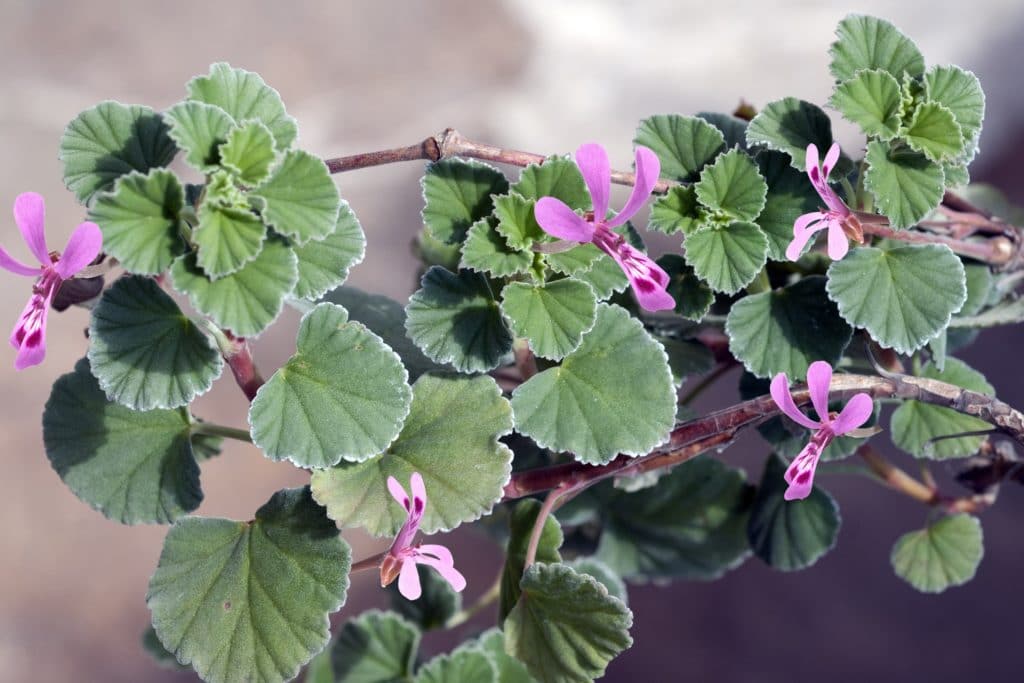
Ingredients and effect
A change in the terminology used in the stork’s beak with the first healing, as is mentioned in a German herbal writings. You defined very clearly, to the today of the geranium species as stork beaks. Pelargonium, it was assigned to meanwhile increasingly of a distinct genus. Leading well-known healers such as Hildegard von Bingen, Paracelsus and Jerome Bock were, in this respect, the stork’s beak, among other things,
- heavy bleeding,
- Diarrhea,
- Ulcers,
- Skin suffer,
- Heart and vascular diseases
- as well as the desire to have children recommended.
In the modern medicine, more application-added areas, including
- Inflammation of the mouth and throat,
- Urinary tract infections,
- Stomach inflammation,
- Stone disease
- and sore nipples after Breastfeeding.
It should be mentioned that not every geranium is equally suitable as a medicinal plant. Only those species of the stork’s beak with a high active substance content for the medical use of out of the question. In total, there are four stork beaks that meet this criterion:
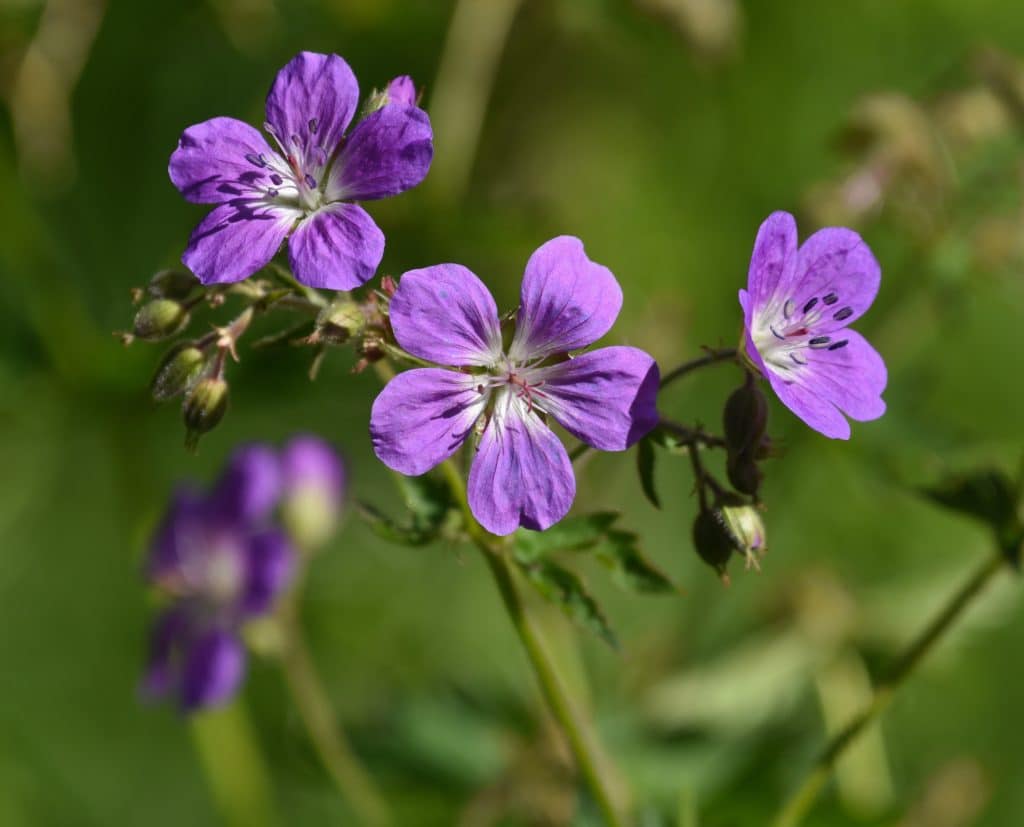
Important: In the culture and care of geranium for healing purposes, it is important not to use chemical fertilisers or pesticides. The chemicals will inevitably go into the ingredients of the plants, which the stork beaks to be as a medicinal herb useless.
Flavonoids act around the blood
Flavonoids are the most important ingredients in the stork are beak. Especially glycoside Compounds of the Flavonoid Quercetin in geraniums as a main ingredients. The yellow Natural dye is produced by Oxidation from the blue plant pigment anthocyanin, which is already blackberries and blueberries their
- antioxidant,
- vascular protective,
- anti-inflammatory
- and wound and hemostatic effect.
In Quercetin-flavonoids, these already valuable properties due to increased anti-carcinogenic effect. Furthermore, Quercetin possesses the ability to inhibit the formation of uric acid, which is likely to be for gout patients and individuals with elevated urinary stone risk particularly interesting. In Detail, the following Quercetin glycosides give the stork’s beak is its therapeutic effect:
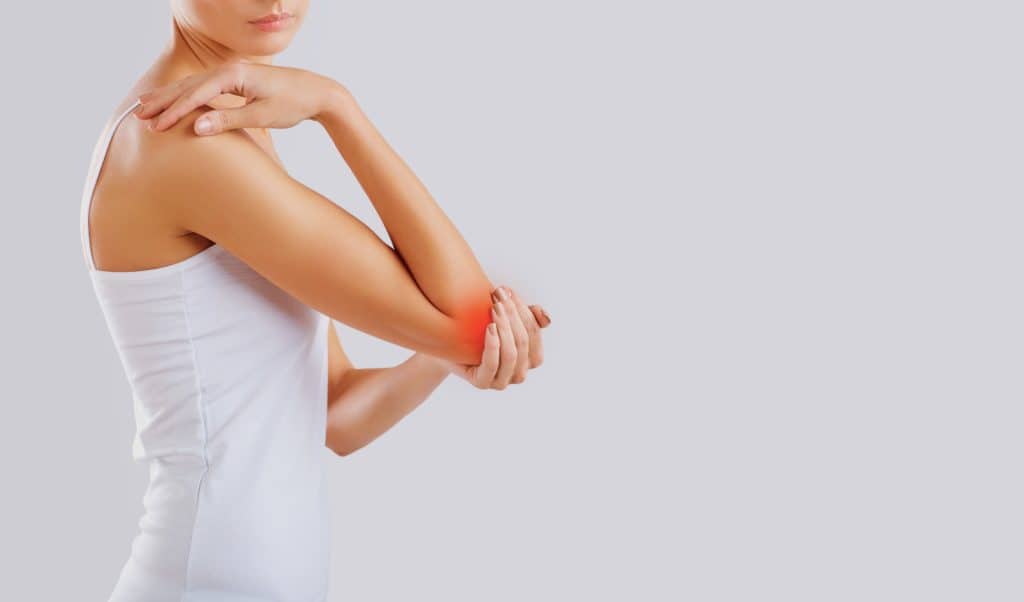
Tannins are natural antibiotics
For the antimicrobial effect of the stork beaks vegetable tannins, the so-called tannins, responsible, including β-Penta-O-galloylglucose and Ellagitannine such as Geraniin and Isogeraniin. You can prefer to make on bacteria and fungi hunting, inflammatory infectious diseases, such as
- Gastro-Intestinal Inflammation,
- Urinary tract infections
- as well as inflammations in the mouth or throat area
are responsible. The antimicrobial effect of tannins is caused by their astringent (astringent) effect on protective layers such as skin and mucous membranes tissue. The corresponding tissue is excited by the compression, so that pathogens have no possibility to penetrate tissues.
In addition, tannins withdraw the moisture-loving bacteria and fungi through their desiccating properties of any nutrient basis. The infectious agents are, therefore, forced literally to the death. Furthermore, tannins can act thanks to their desiccating effect of the successful cases.
Carboxylic acids stimulate the metabolism
“Carboxylic acid” is acids an Umbrella term for a number of Body, including not only amino acids and fatty acids. For example, as Vitamin C is known ascorbic acid is also a carbon. The Vitamin has in the body to an antioxidant and anti-inflammatory tasks. On the other ascorbic acid for the
- Blood formation,
- Digestion,
- Immune system,
- Nutrient absorption of the body
- as well as the cell renewal of the skin and organs is essential.
A healthy metabolism as well as a functioning immune system and the health of skin and organ tissue do not come out without Vitamin C so.
In combination with other herbs (for example, lady’s mantle, or nettle) stork’s beak desire to have children is a popular herbal ingredient for the so-called nest reinigungstee. The malic acid of geranium herb to rid the substances of the female body of harmful toxins and in this way, the female fertility increase. In fact, pollutants can affect the hormone levels of a woman negatively.
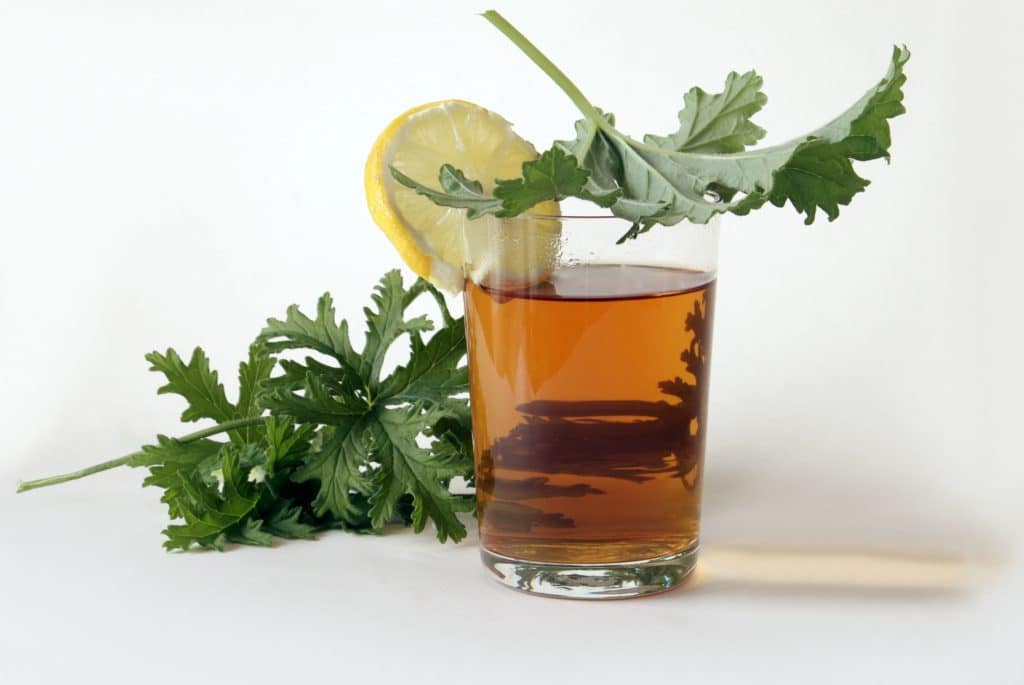
Just to the formation of hormones important nutrient intake of the body is inhibited by toxins such as aluminum. The hormonal imbalance can be as a result of affect on an irregular cycle or lack of ovulation, the female fertility. Malic acid is in this respect used for a very long time as an important medical ingredient for the recovery of aluminum.
Interestingly, malic acid is also that it promotes in the body is the absorption of the alkaline Minerals Magnesium. The body’s acid-base balance can be compensated for in the case of a combined intake so wonderfully and existing Acidity can be successfully treated.
Also noteworthy is the effect of malic acid on the urinary system is because the carboxylic acid acts on the metabolism
- urinary forming
- dewatering
- and urinary stone formation is prevented.
For the medical use of these properties is often acid a other carbon, namely citric acid, is used. Their effect is that of malic acid are the same, but it can be pharmaceutically considerably cheaper. Stork’s beak, in this context, an interesting natural source for both acids, because citric acid is contained in the Plant.
Application and dosage
Side effects or counter-indications are for stork’s beak is not known. In the selection of the plant parts, there are however a couple of things. To primarily be used, namely, the roots of the Plant went. They are particularly rich in medicinal content and are therefore particularly effective.
Only the Ruprecht herb known Stinking cranesbill also provides highly effective leaves and flowers. Who has grown to be Ruprecht herb itself, so gather up the best during the flowering period, between may and September.
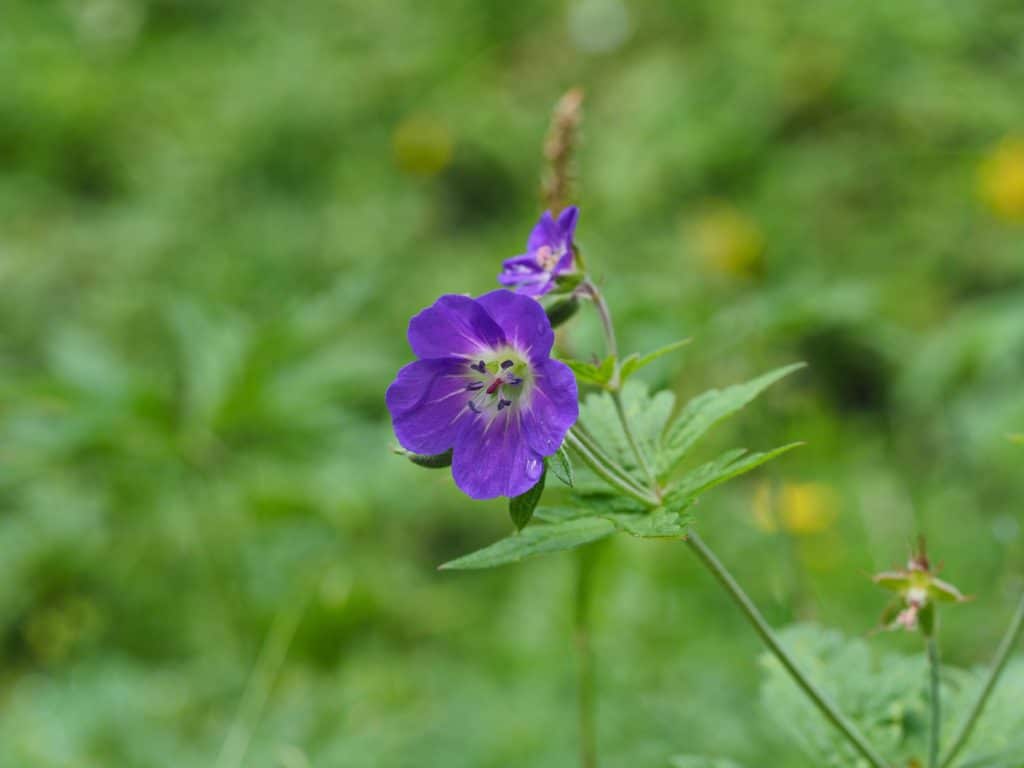
Cranesbill tincture for external use
For the treatment of wounds, skin, mouth suffering, or inflammation of the pharynx usually of Smelly or blood-red geranium. The latter should be particularly well-suited to stop bleeding.
Be used in the external application extracts from the fresh juice of the stork beak. The stork’s beak tincture is then used either by means of compresses on the affected skin area applied to, or used undiluted as a gargle or as a mouthwash. In the case of skin problems, in Particular, the application of the geranium herb is also as a Bath additive.
The production of geranium tincture:
300 grams of fresh roots or leaves of the stork’s beak in a clean glass Jar or a large bottle and with 600 milliliters of vodka pour the tincture approach for about four weeks in the light of the sun and occasionally shaking, and then the approach through a clean linen cloth filters, and the tincture to a better active substance shut in a dark bottle to fill.
Storchschnabeltee for internal use
In the case of desire for children, and other reasons for the internal application (for example, gastro-intestinal inflammation), stork’s beak, not only as an ingredient to make herbal tea blends to apply. Also, a pure Storchschnabeltee can be safe to drink. Whether you’re using fresh or dried herbs, it doesn’t matter. Dosed the tea as follows:
A tablespoon of geranium herb in half a Liter of cold water, and broth in a saucepan, bring to a Boil, then the tea for about 10 to 15 minutes. Then the herbs straining the tea cool down before Drinking.
In the oral application of the stork’s beak was warned of its extremely bitter taste. He is the flavonoids and tannins of the stork’s beak owed, which give the Plant an extremely bitter flavor. It is the Motto: The more bitter the medicine is, the more beneficial it is. At least in Storchschnabeltee you can reduce the bitter taste but with a bit of Sugar or honey.
Studies on the effectiveness of a stork’s beak
Unfortunately, stork’s beak, is explored little, even though many well-known herbalists of antiquity speak of him. Some of the positive results of the study with a look at the ingredients of the stork’s beak but hold on.
Researchers at the Vein and Skin Care center in the American Allentown, found in a study that combined administration of Vitamin C and Rutoside for the healing of Purpura. Vascular disease makes for a strong capillary bleeding in the skin tissue, and in the Form of red blood spots under the skin.
Specialists of the Department of food science and biotechnology at Kyoto University in Japan, the efficacy of Quercetin and Rutin against chemically provoked Colitisin another study to prove it. The effectiveness of both ingredients in intestinal inflammation is occupied.
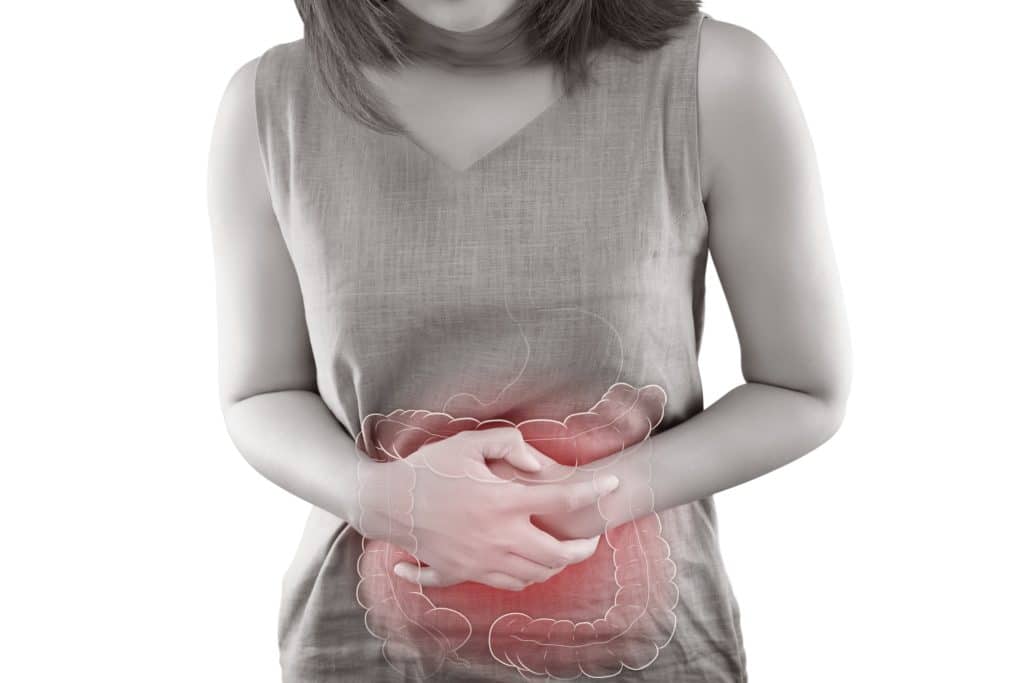
In addition to a detoxifying function discovered clinical studies the efficacy of malic acid against fibromyalgia. The metabolic disease is due to a special sensitivity of the muscles and joints pain, with a lack of the tissue hormone Serotonin as a trigger will be discussed. The hormone as a Neurotransmitter essential for the regulation of the gastrointestinal activity as well as blood pressure responsible. The female cycle is indirectly related to serotonin production.
The fertility-enhancing effect of a stork’s beak don’t like so far are considered to be medically backed up, but many Pregnant women delivered after the application of Storchschnabeltee positive experience.
Geranium buy
Many of the products from the stork’s beak, there is not at the Moment to buy still. The most important basic ingredients and recipes for their own stork’s beak, such as, for example, cranesbill root, but may be found today.
Conclusion
Stork was described beak in ancient times by many famous healer, has been demoted to the flower today almost entirely for Ornamental plant for the garden. There is a renewed interest in the medicinal herb, which is due not least to numerous women suggests, however, the stork’s beak as a secret tip in the case of unfulfilled desire for children recommend. Almost ironic since it appears that the fertility-enhancing effect of the stork beaks is the only one that has not yet been scientifically investigated. To all the other healing effects, at least for external studies, confirm if you can comment on the action of geranium in Particular, at least the medical efficacy of its ingredients. (ma)
